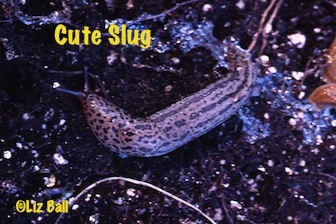Symptoms
 |
Slugs usually become a problem when their ideal weather conditions (cool and wet) prevail in the spring and early summer. This is why they are such a big problem in the Pacific Northwest where rainy and generally cool weather is common. Some types rapidly produce 2 or 3 generations by midsummer. An individual slug can eat 30 to 40 times its own weight every day! Consequently, without control measures, they may proliferate so that there are 1 or 2 slugs in every square foot of planted area in your yard--more if you grow hostas there.
Resistant Plants
Plants Generally Resistant To Slugs and Snails
Ornamental plants resistant to slugs include the following:
| Plants Resistant To Slugs | ||
|---|---|---|
| Alum Root | Artemisia | Balloon Flower |
| Bleeding Heart | Boltonia | Candytuft |
| Coralbells | Coreopsis | Foxglove |
| Goats-Beard | Hardy Begonias | Jacob’s Ladder |
| Lamb’s Ears | Lenten Rose | Leopard Plants |
| Rose Campion | ||
 Plants Commonly Attacked By Slugs and Snails
Plants Commonly Attacked By Slugs and Snails
Common slug and snail targets include the following:
| Ornamentals Vulnerable to Slugs | ||
|---|---|---|
| Begonia | Bellflower | Daylily |
| Delphinium | Geranium | Gladiolus |
| Hollyhock | Hostas | Iris |
| Marigold | Pansy | Petunias |
| Primrose | Rhododenron | Azaleas |
| Bush Rose | Saxifrage | Snapdragon |
| Violets | ||
| Fruits and Veggies Vulnerable To Slugs | ||
|---|---|---|
| Citrus trees | Avocado | Cabbage |
| Lettuce | Mushrooms | Rhubarb |
| Strawberries | Tomatoes | |

